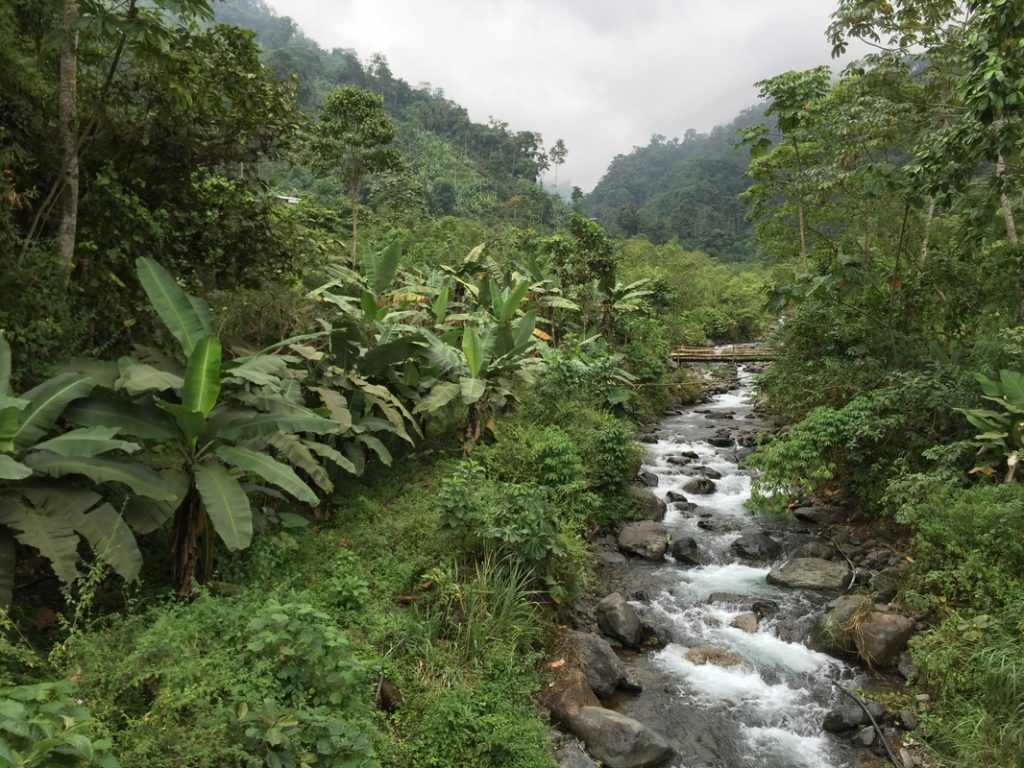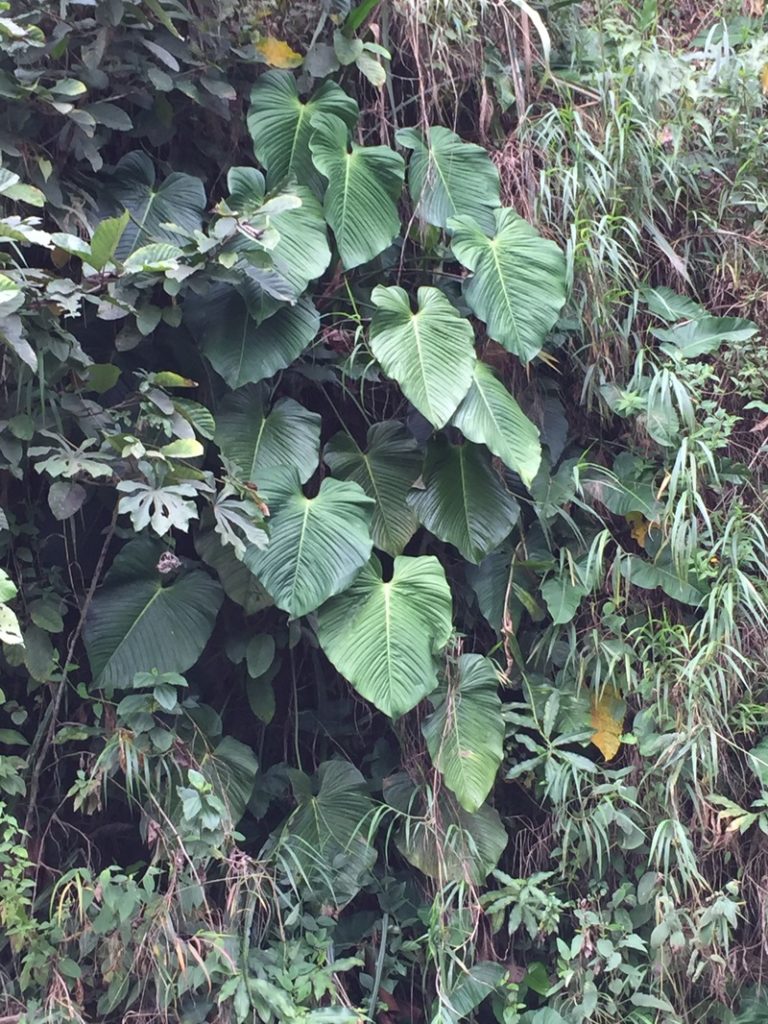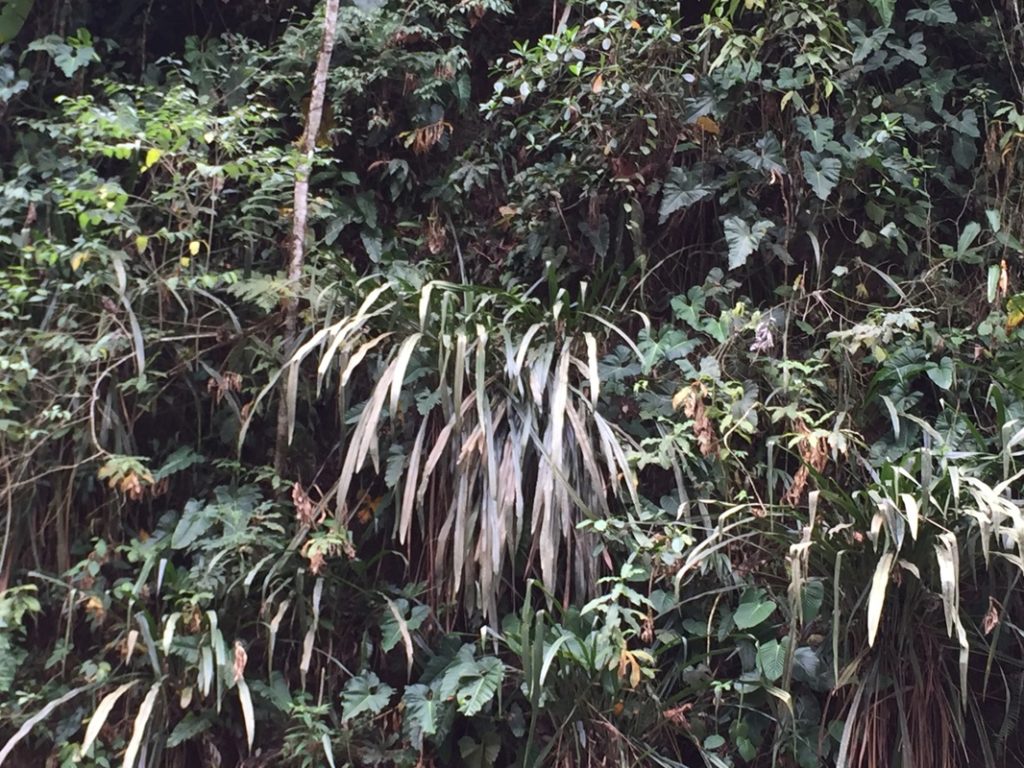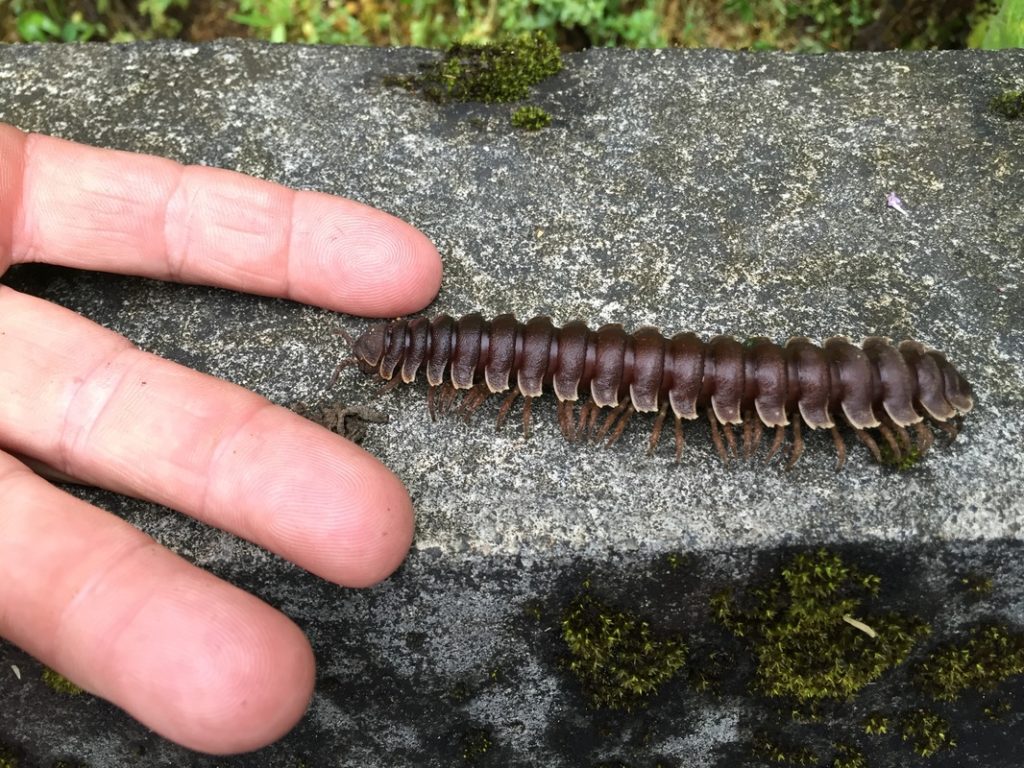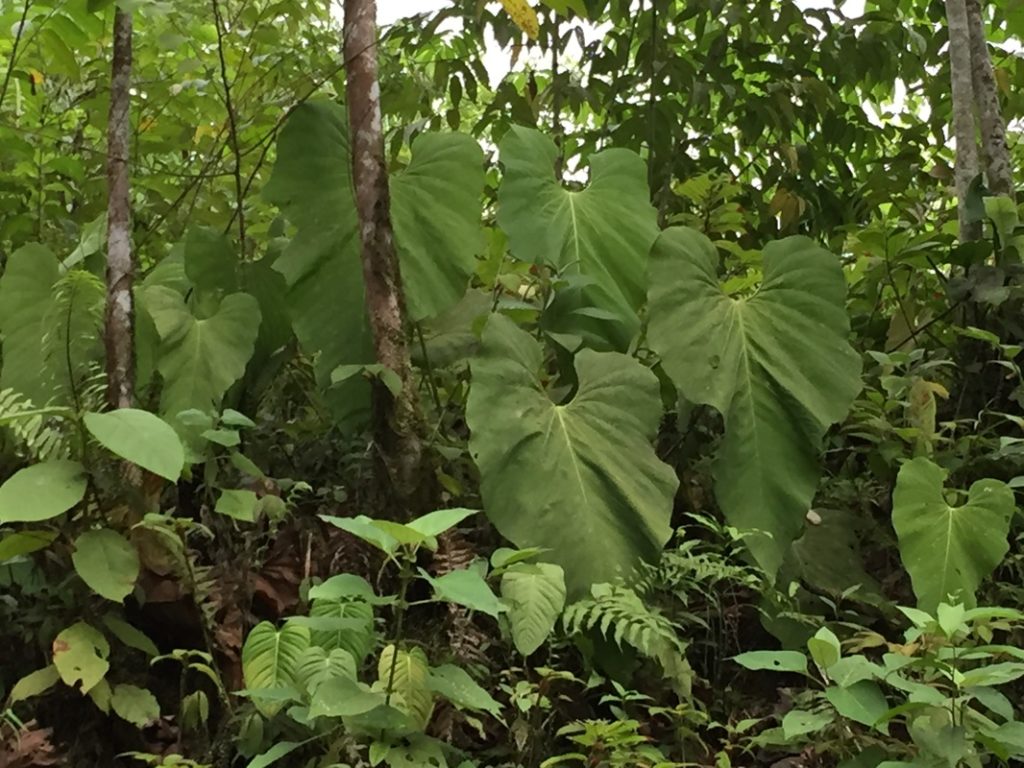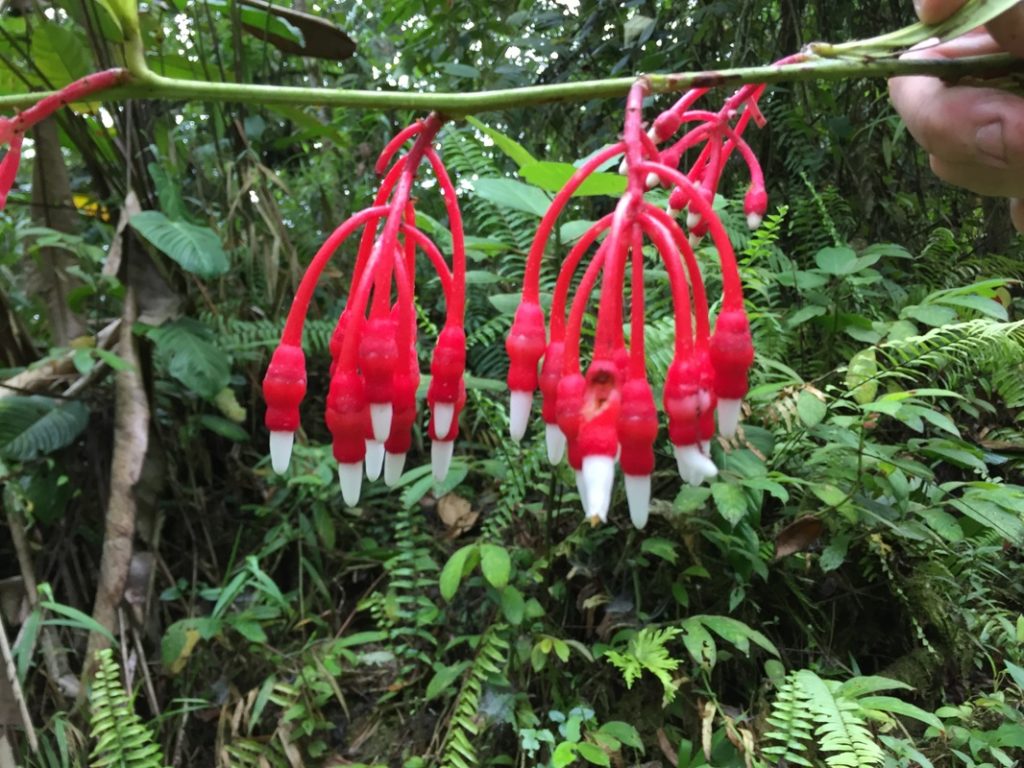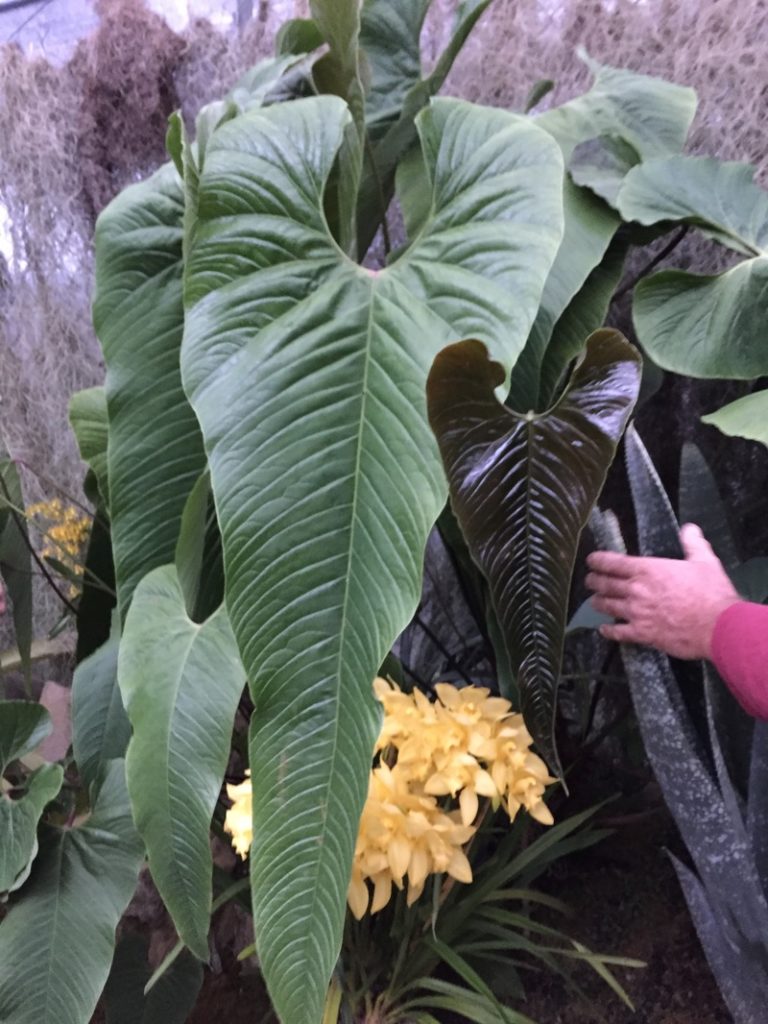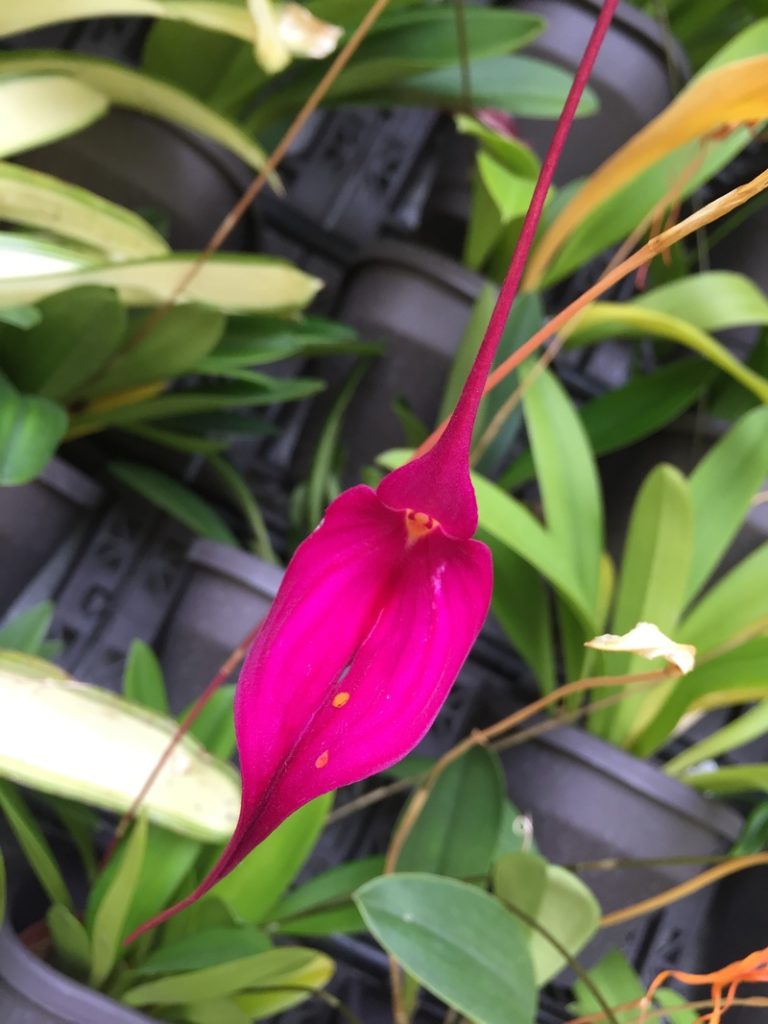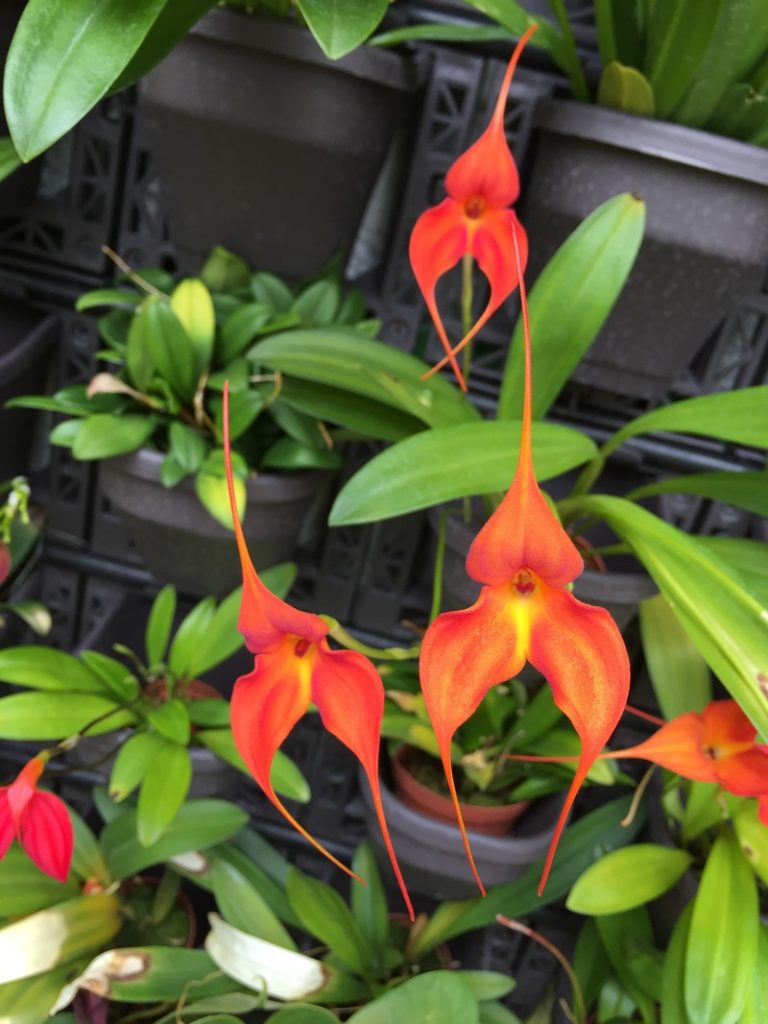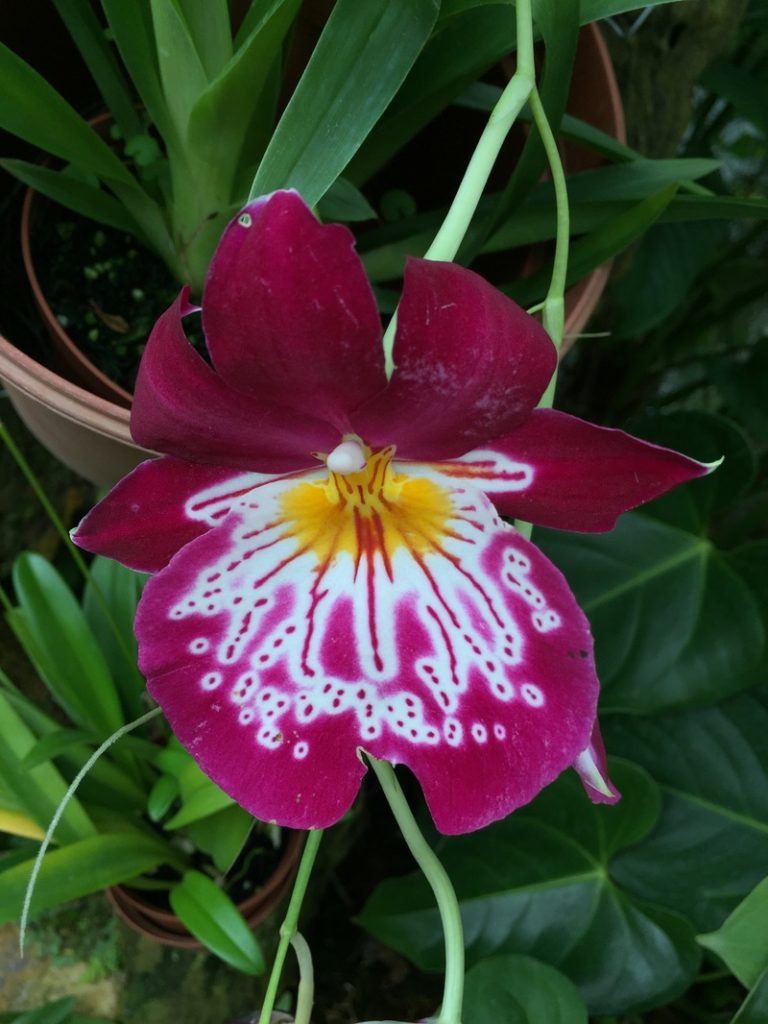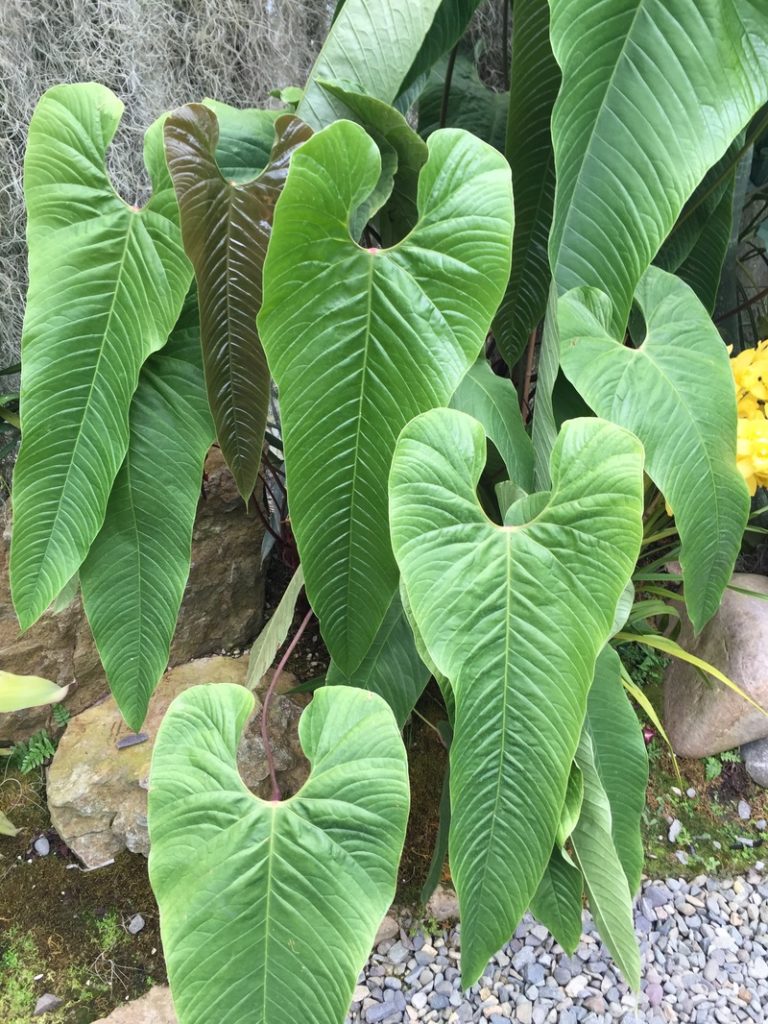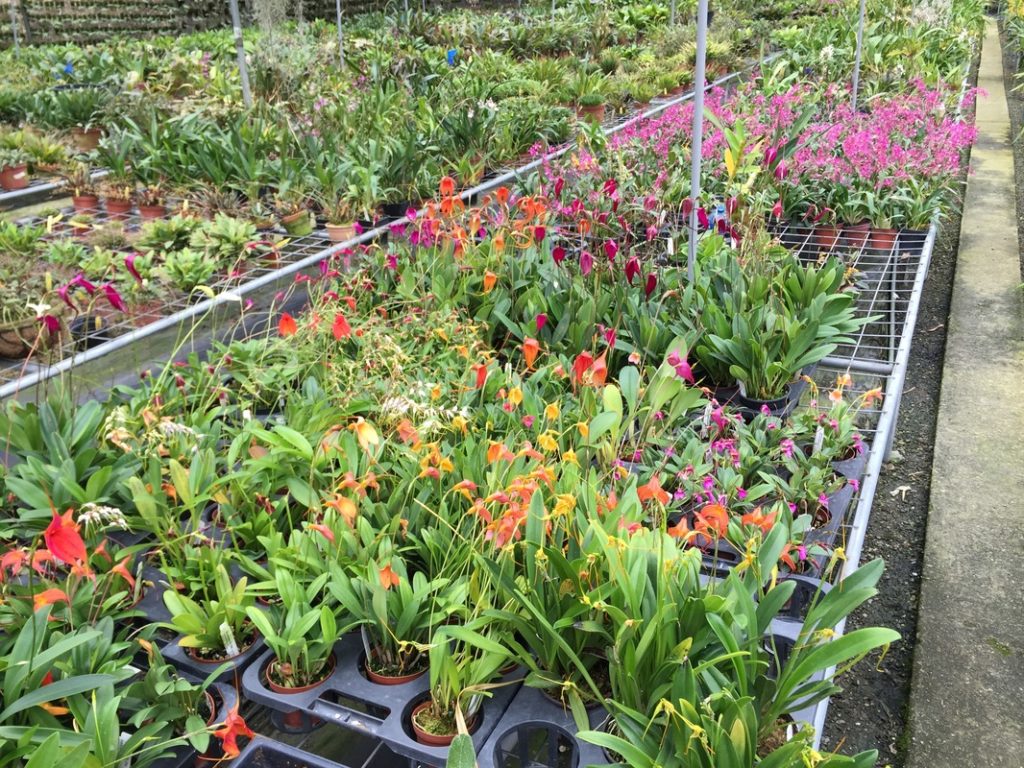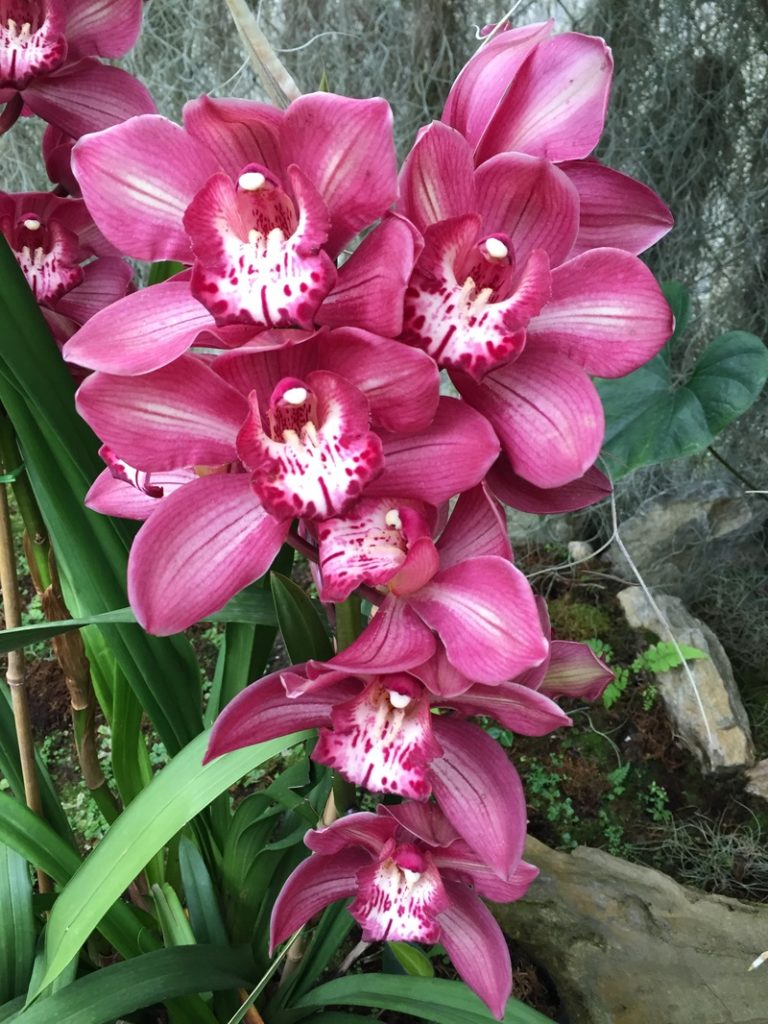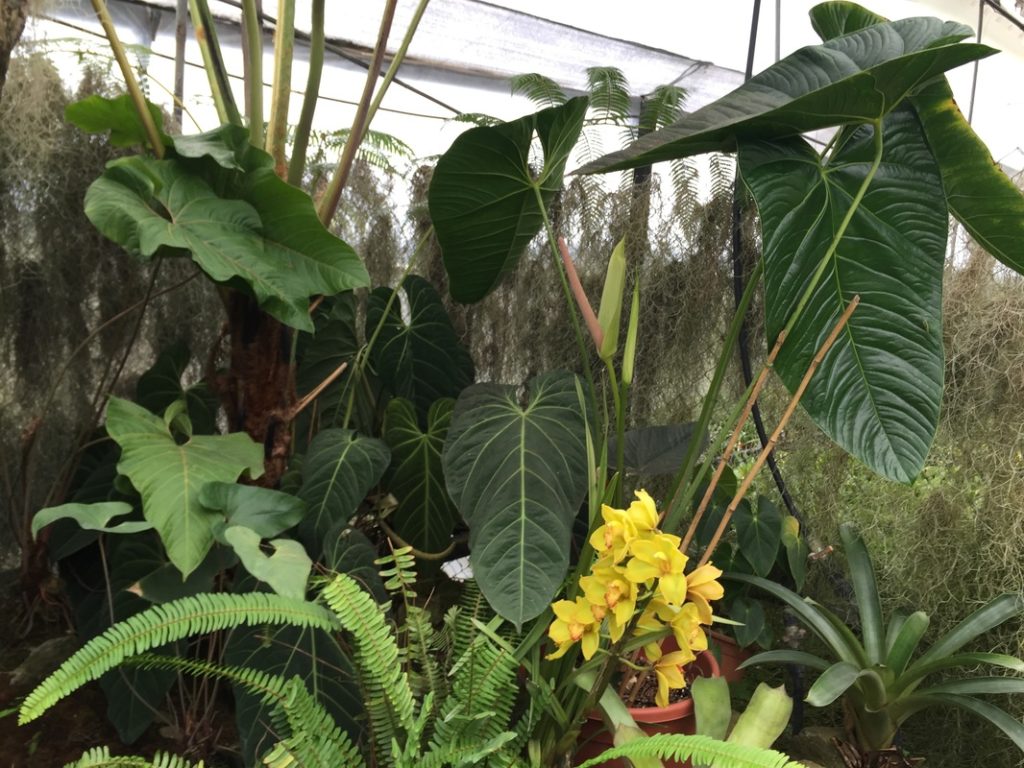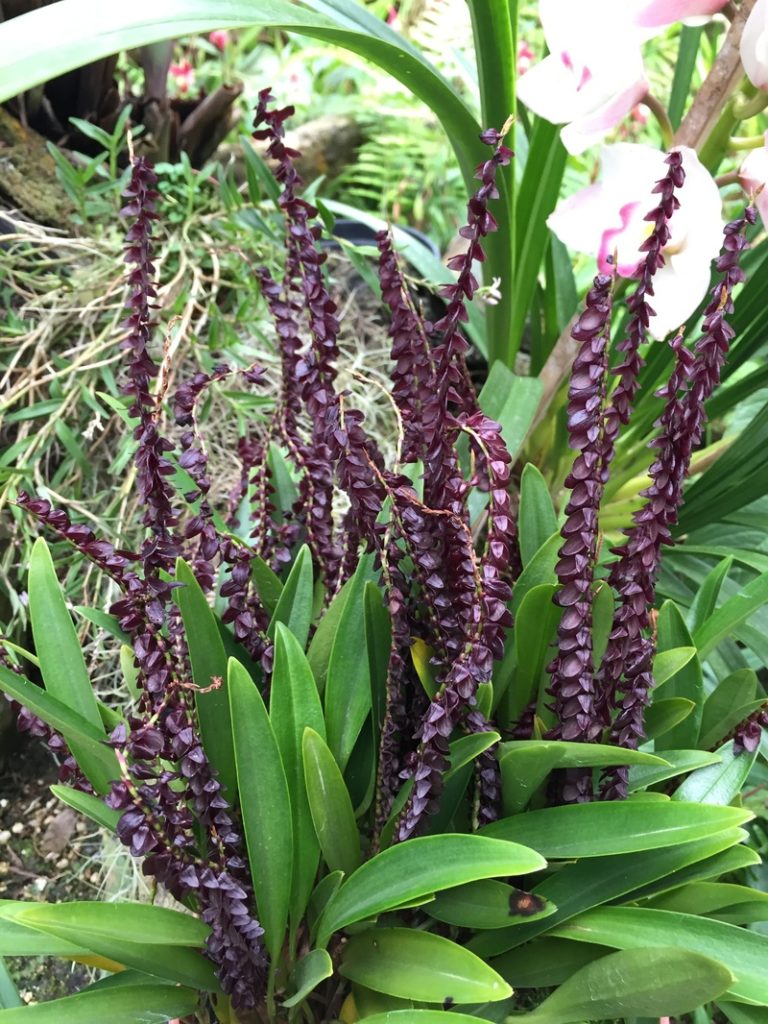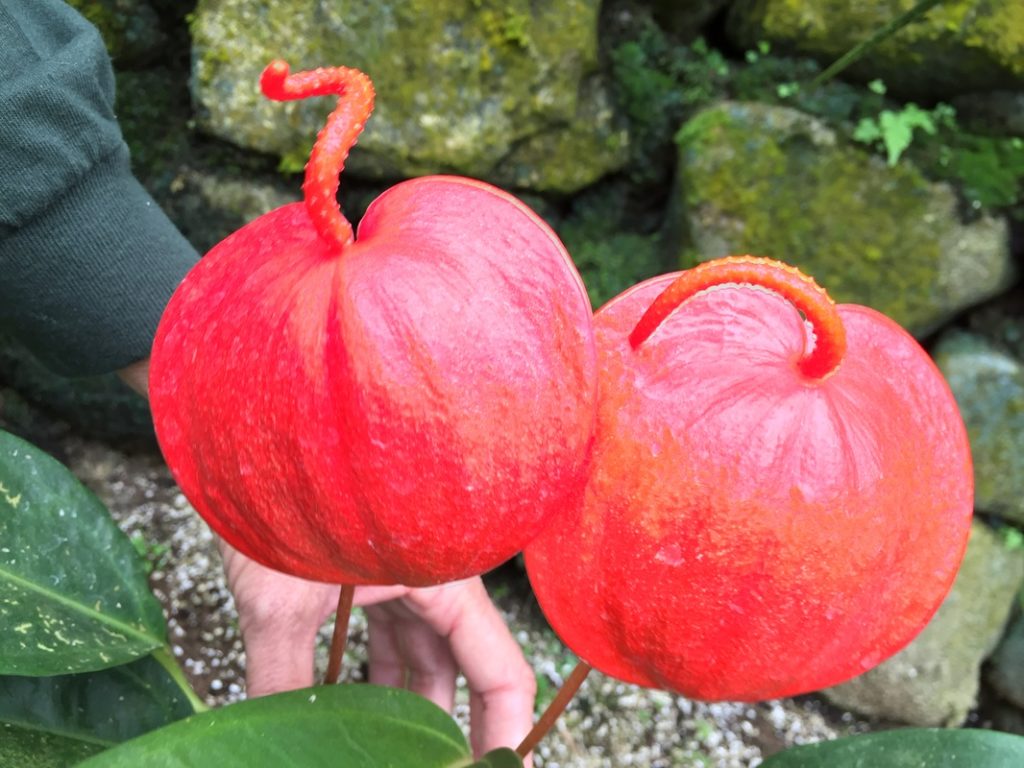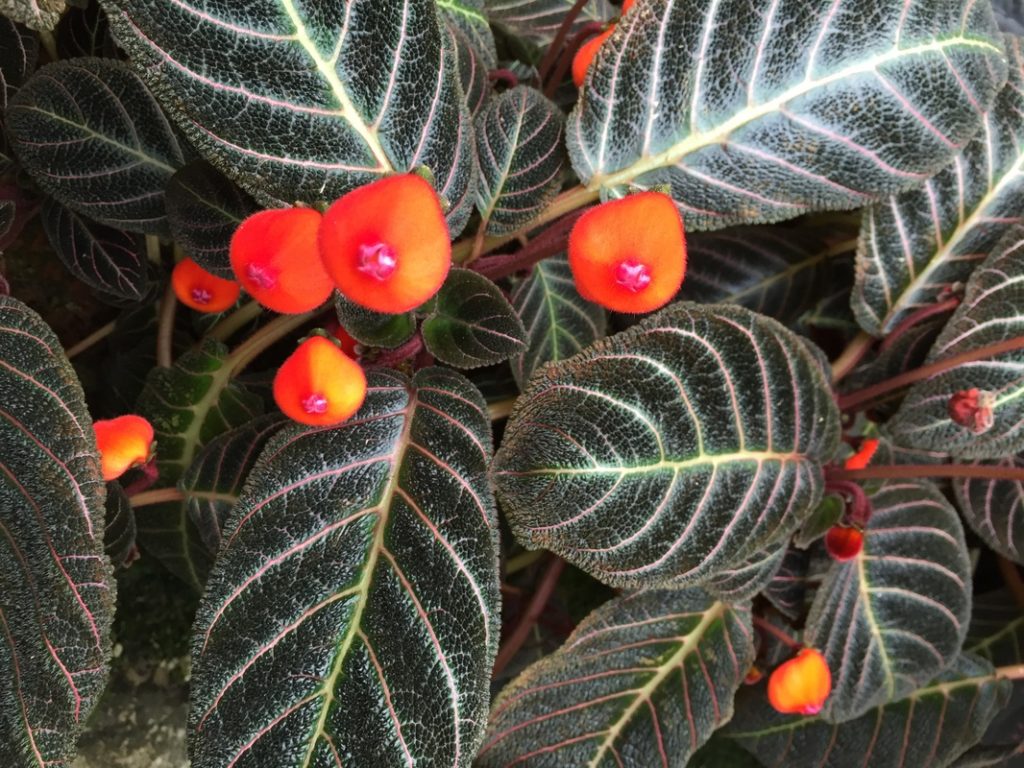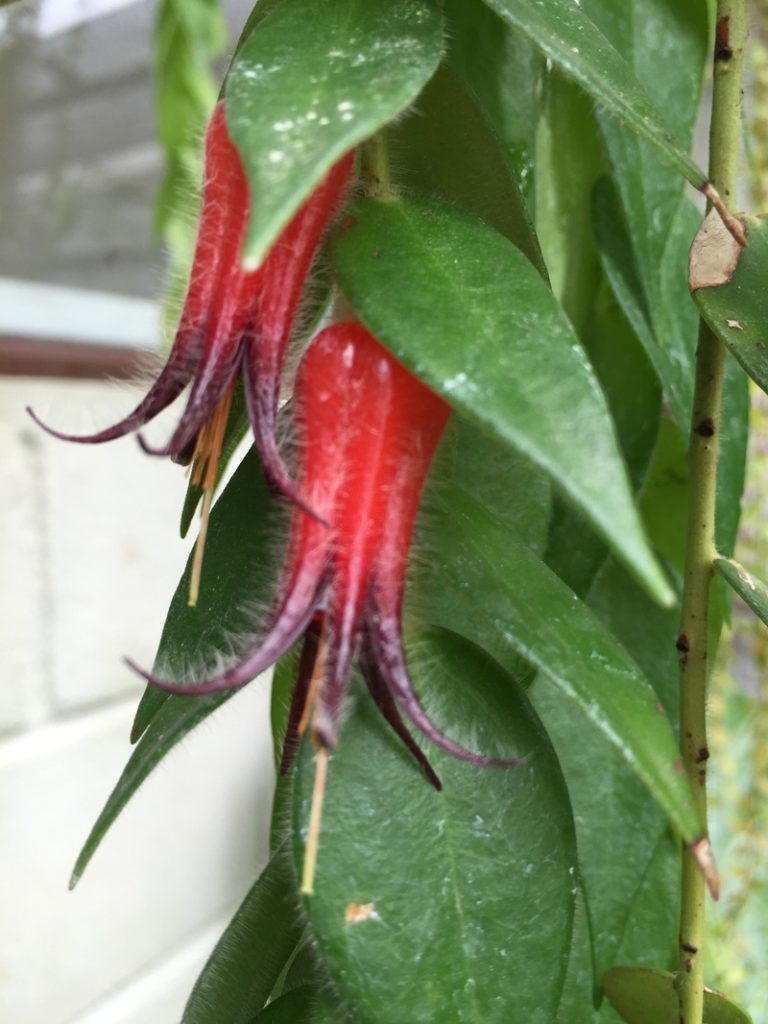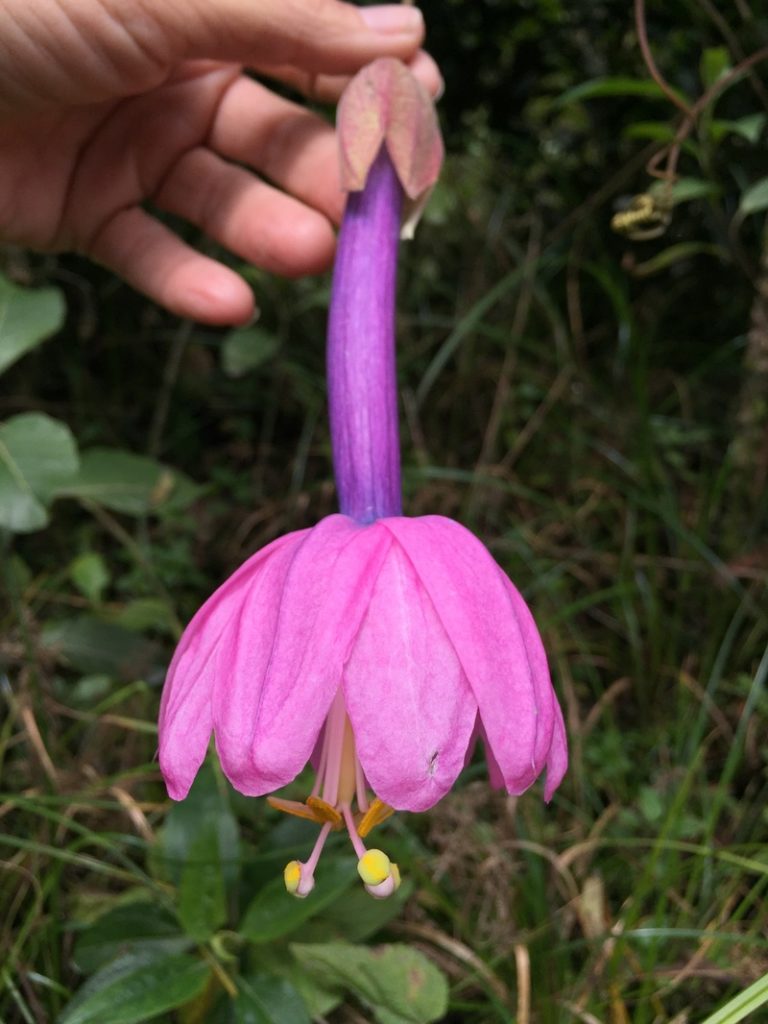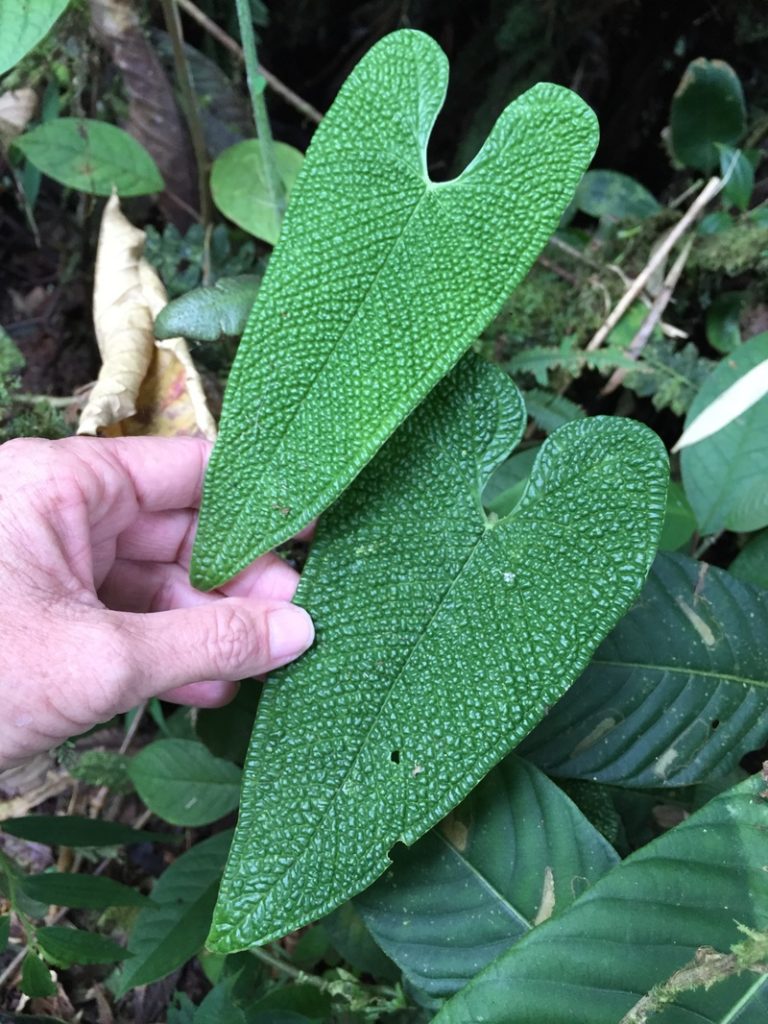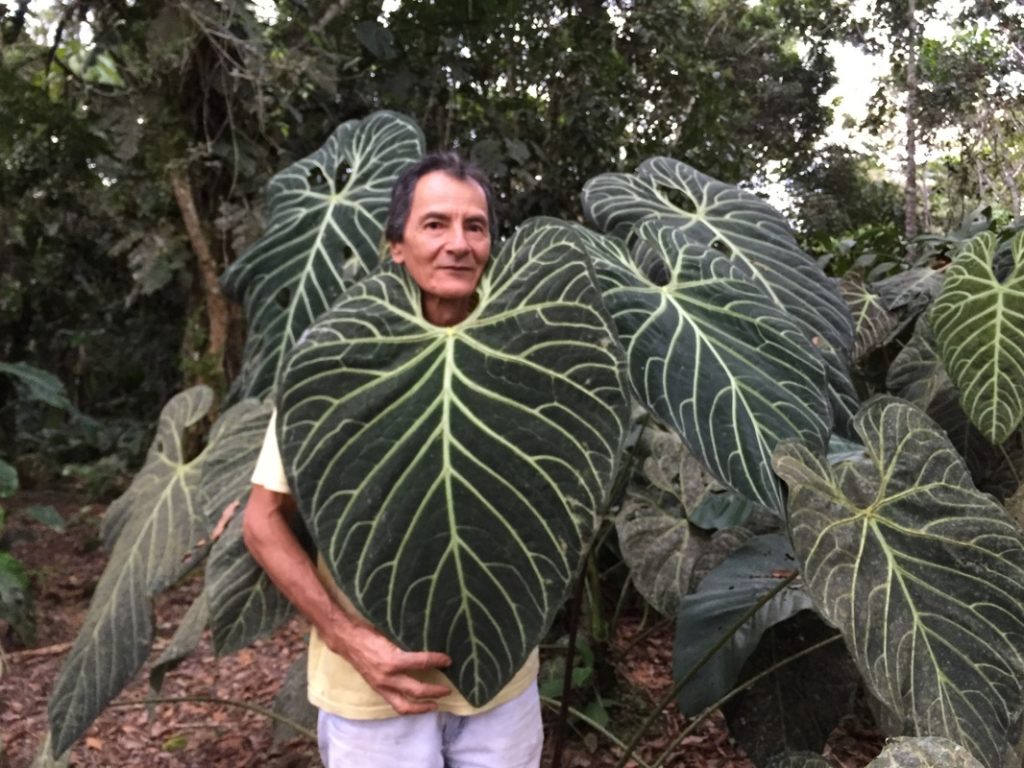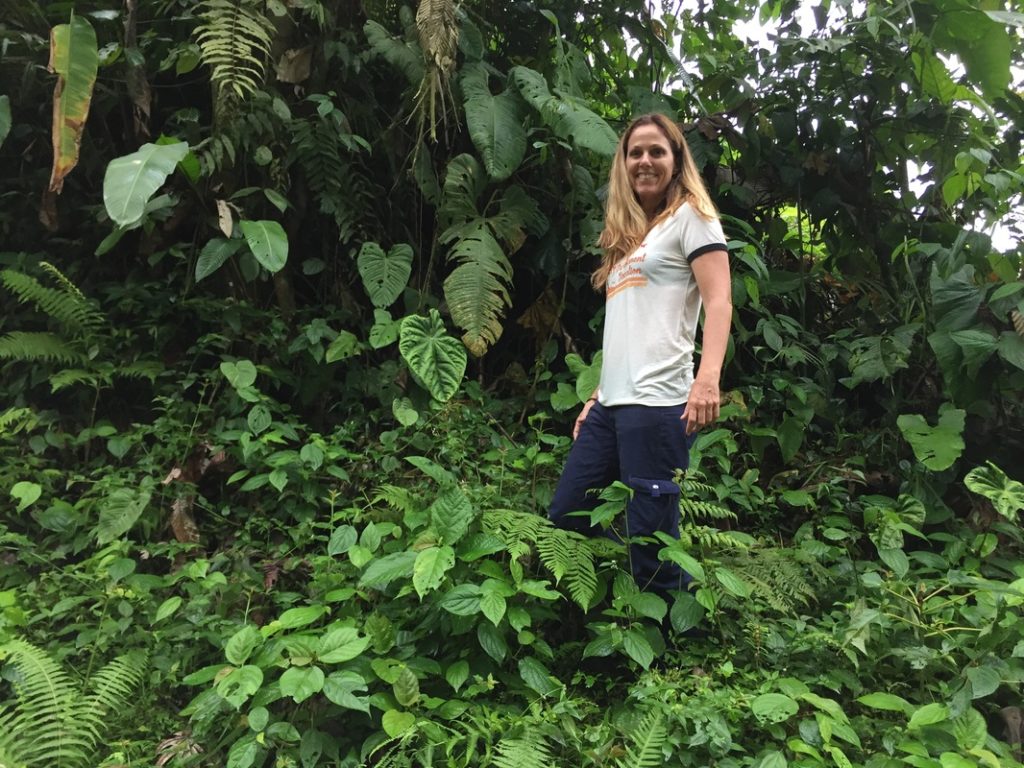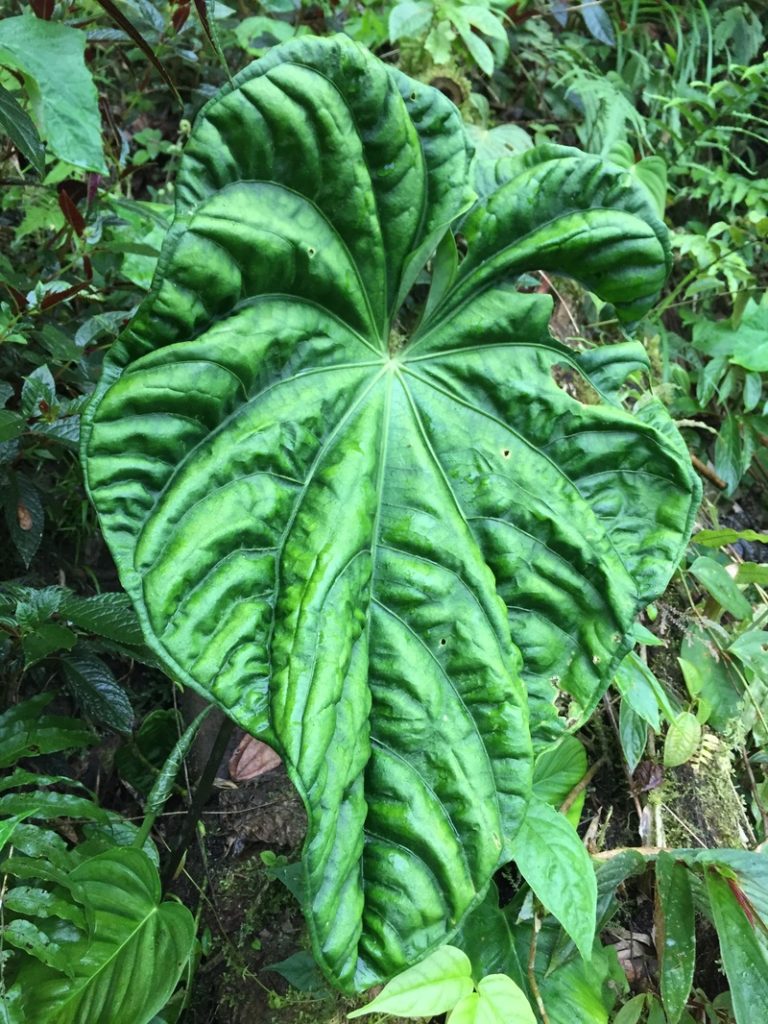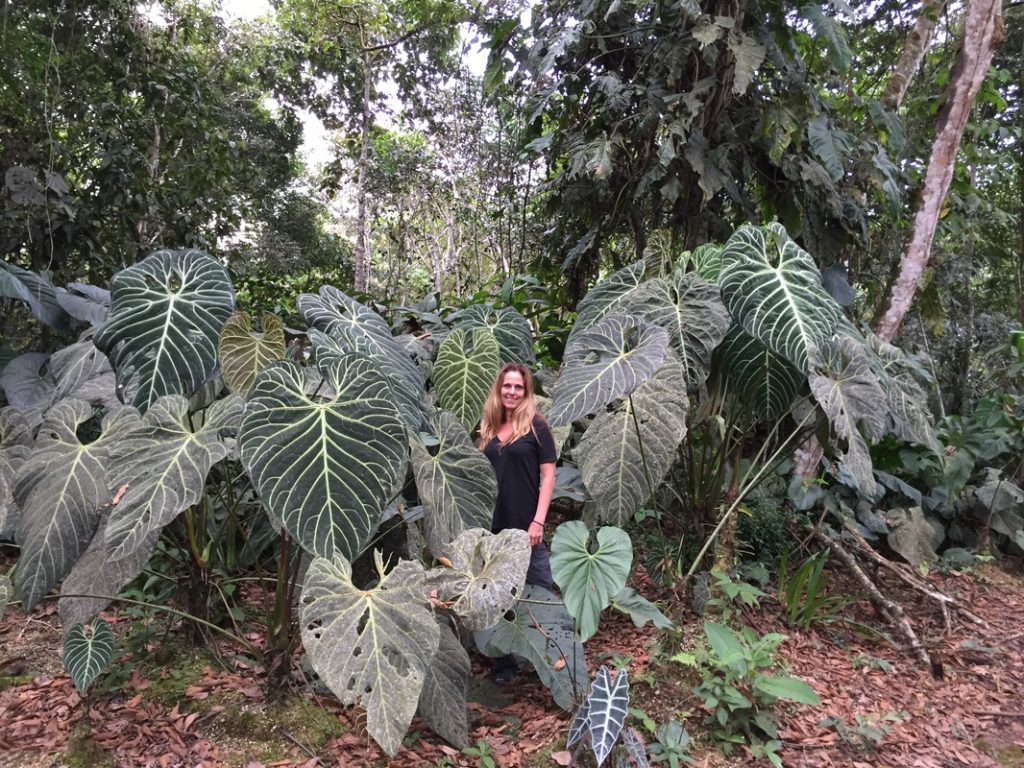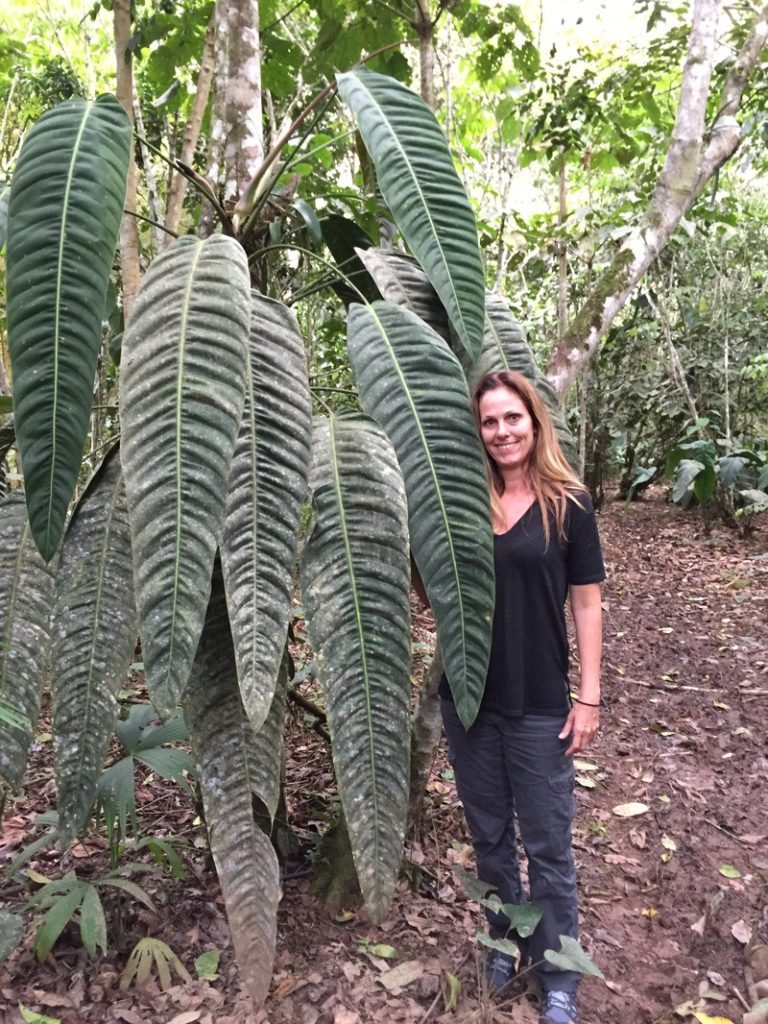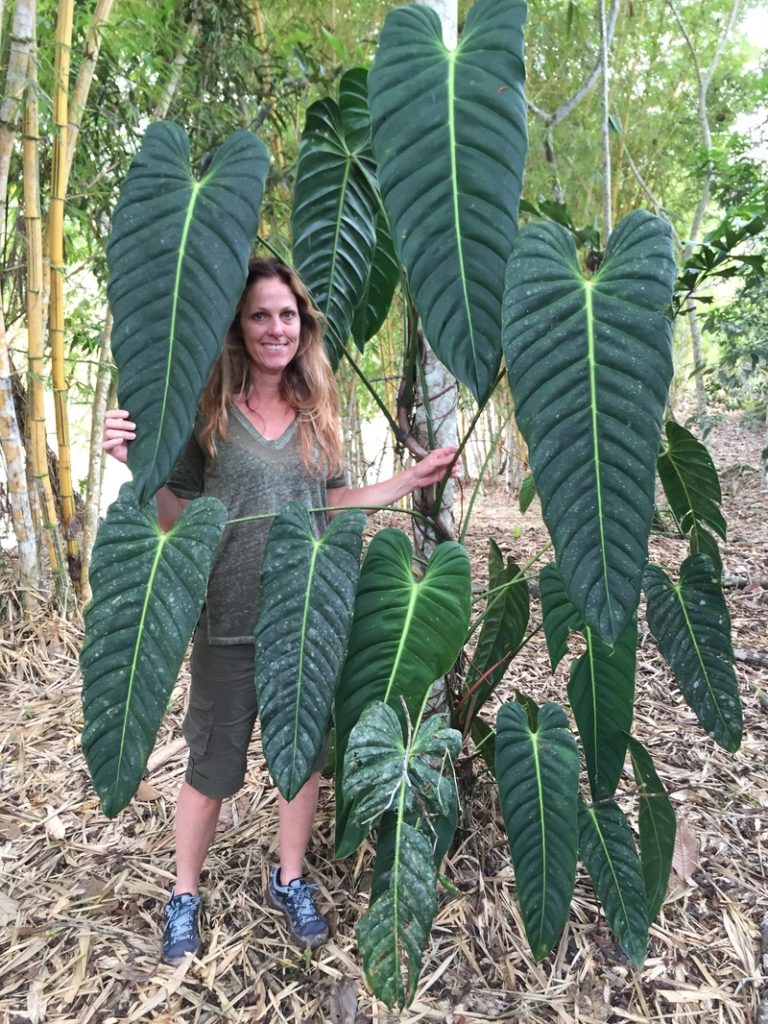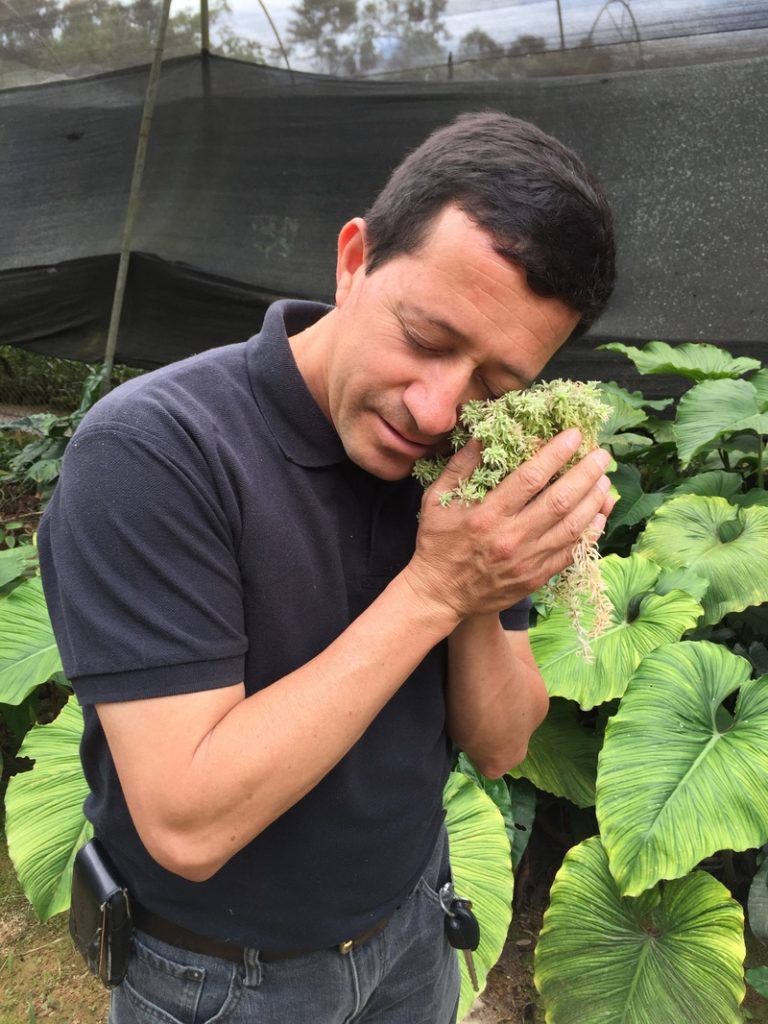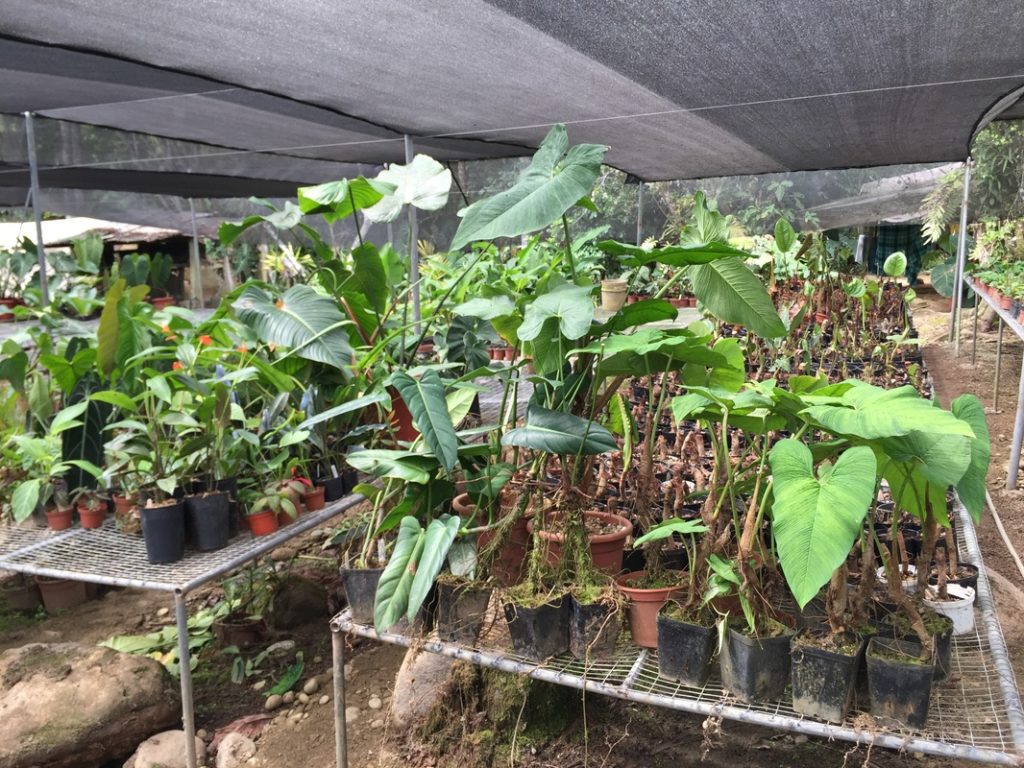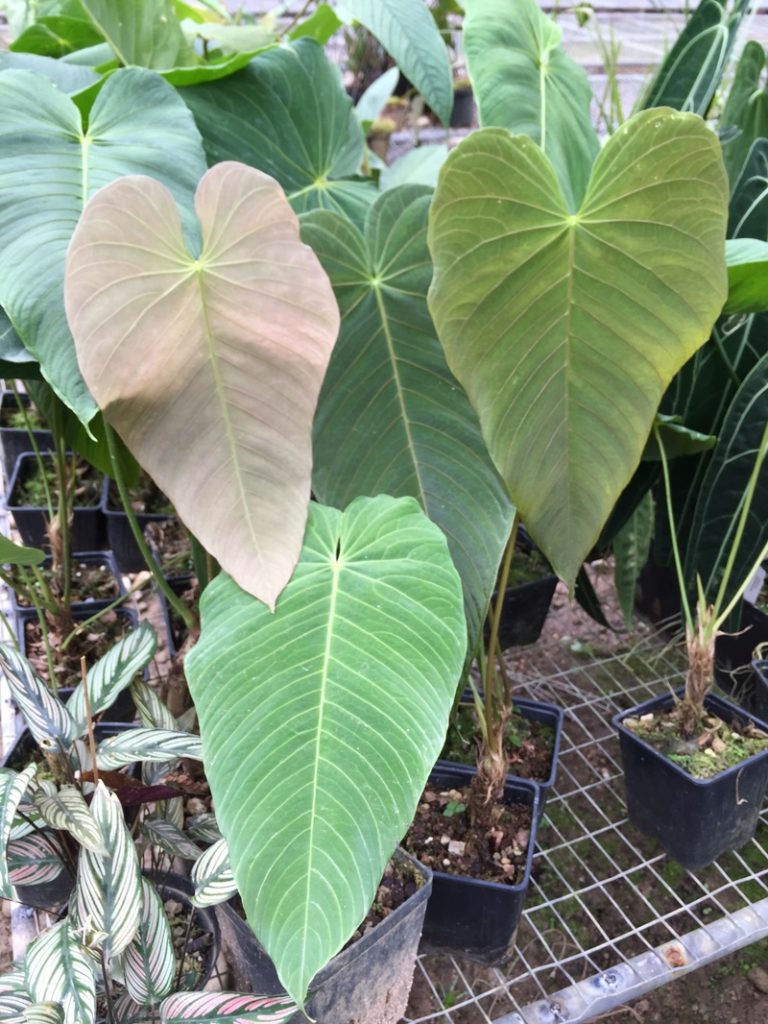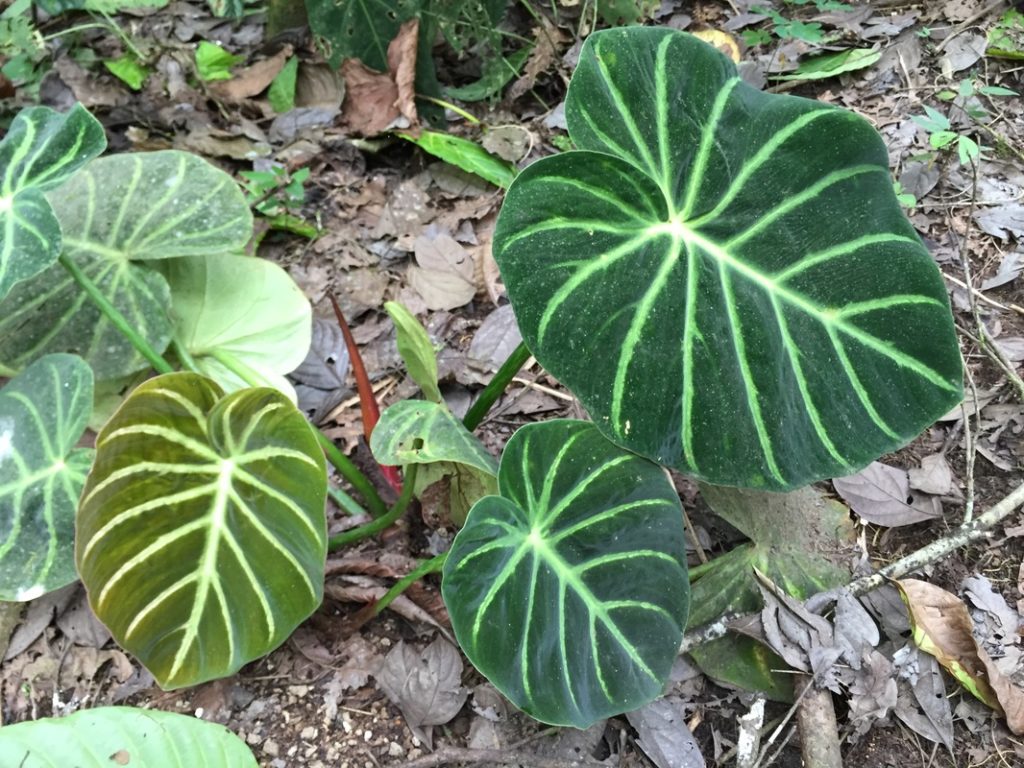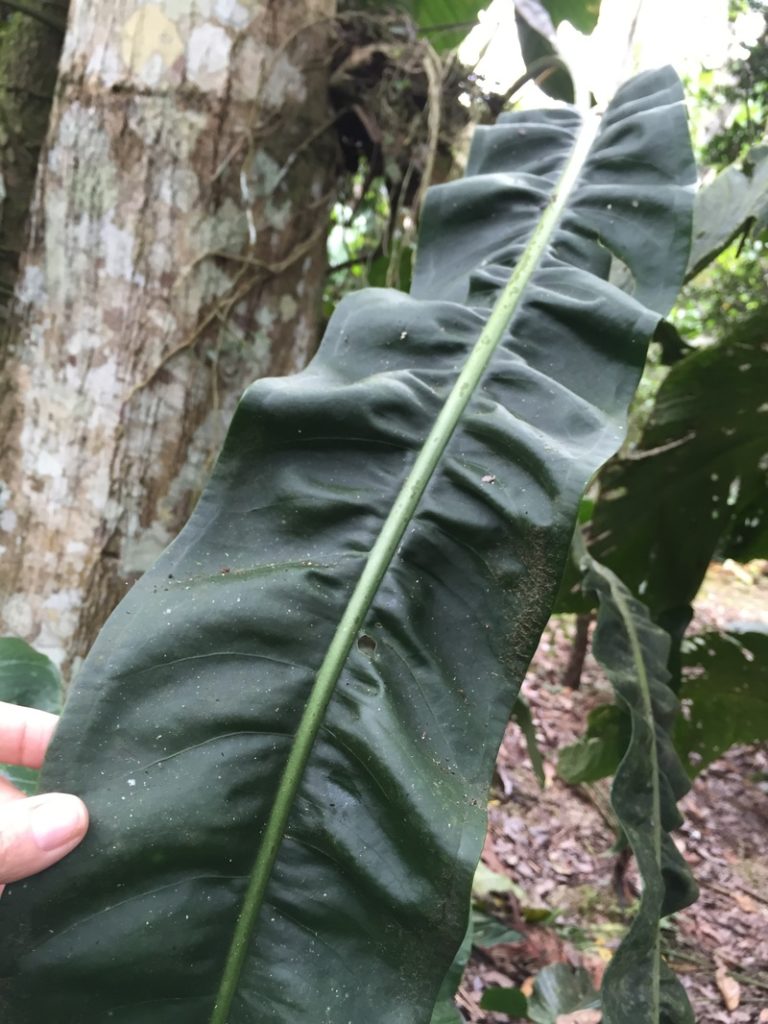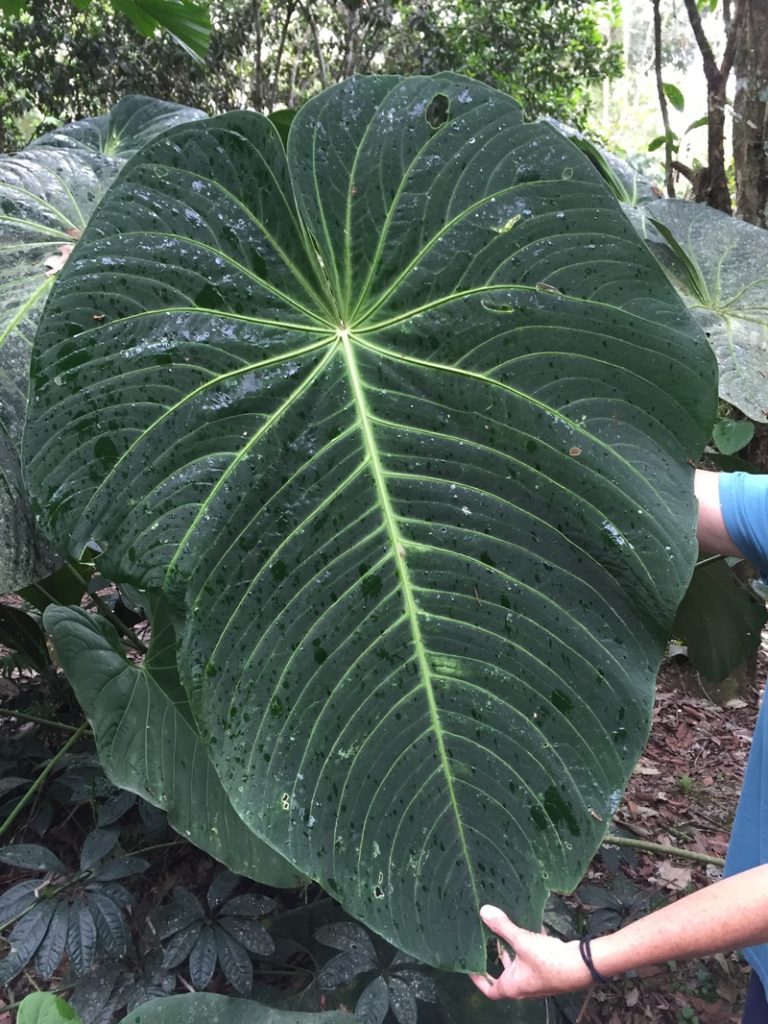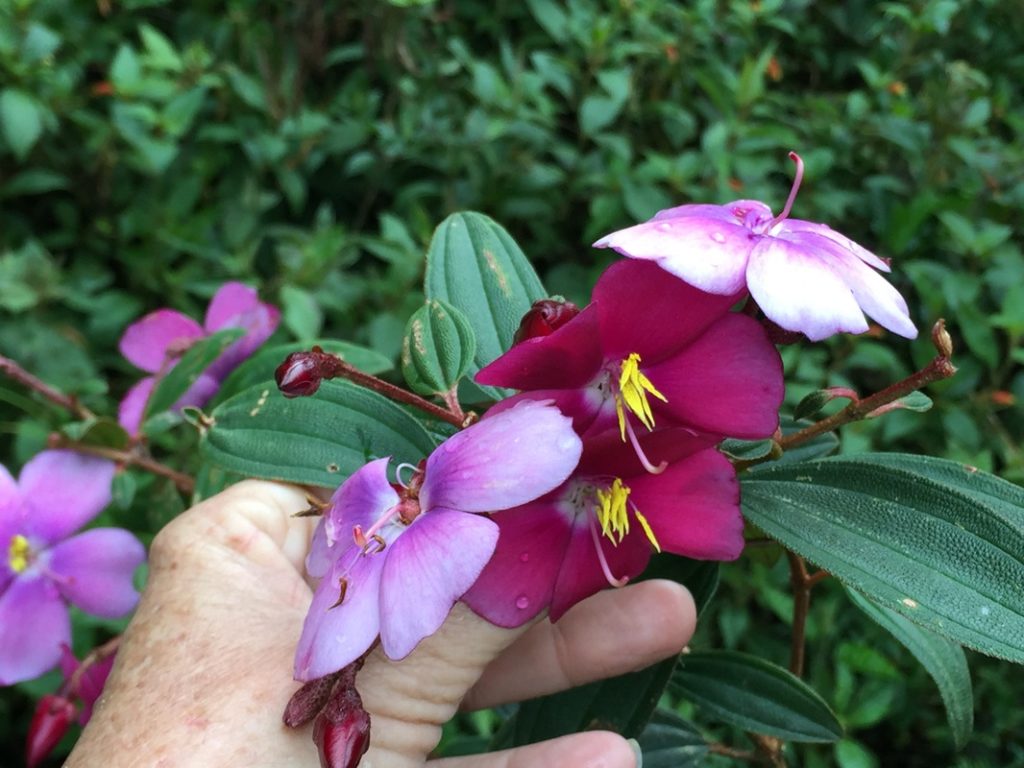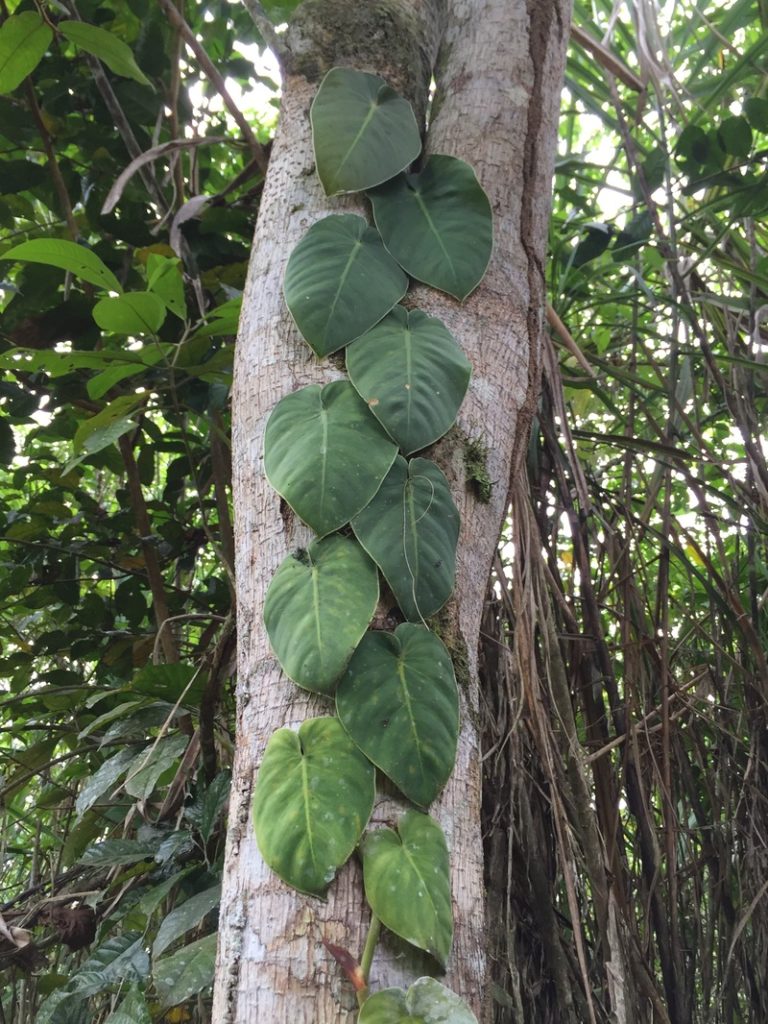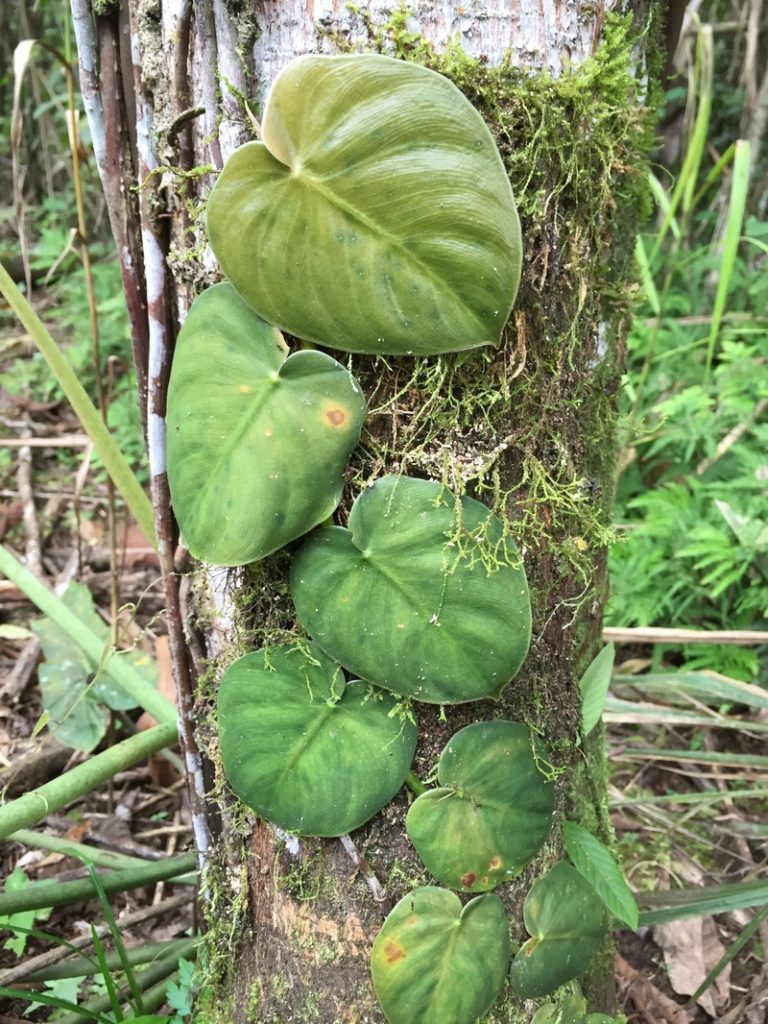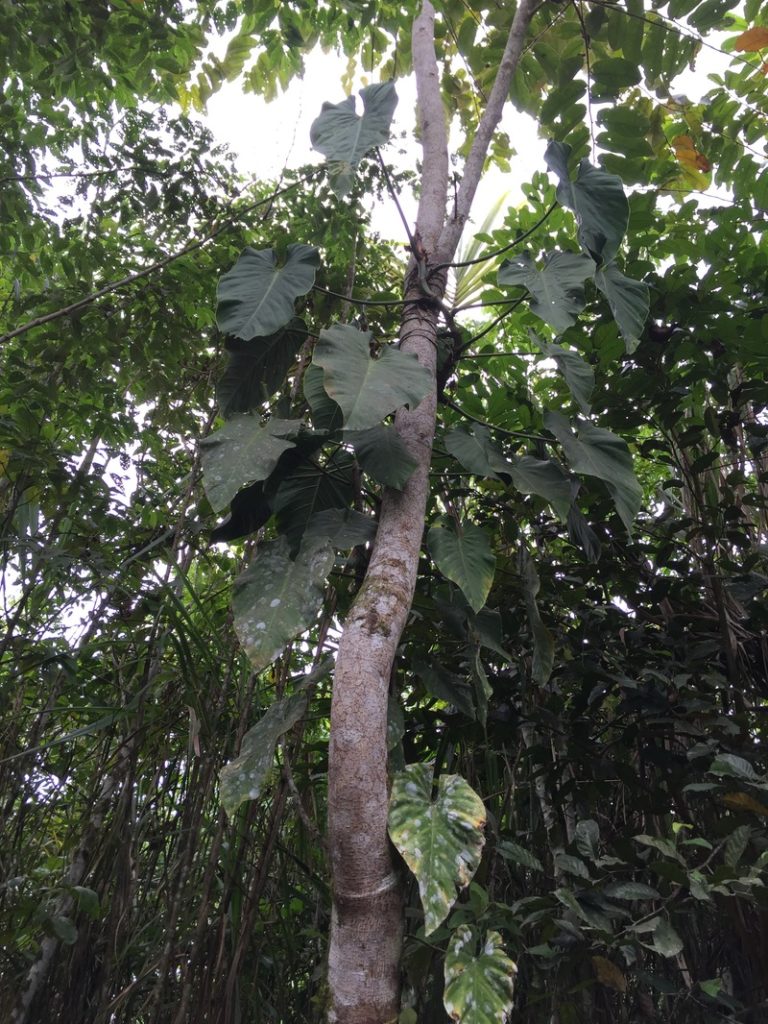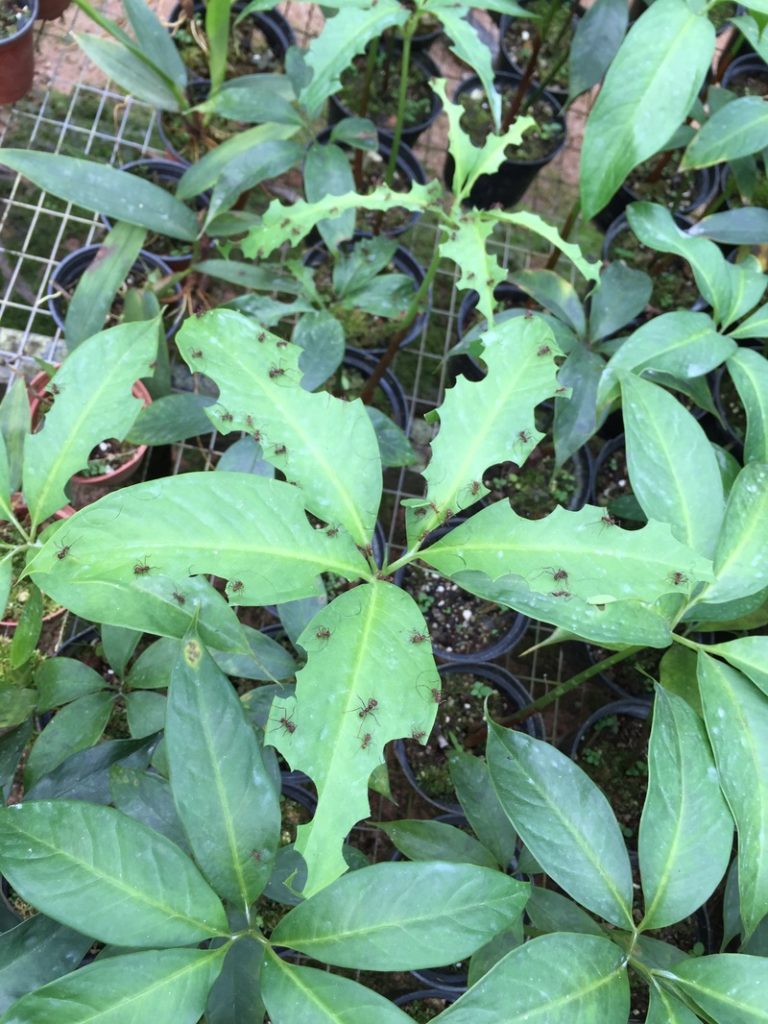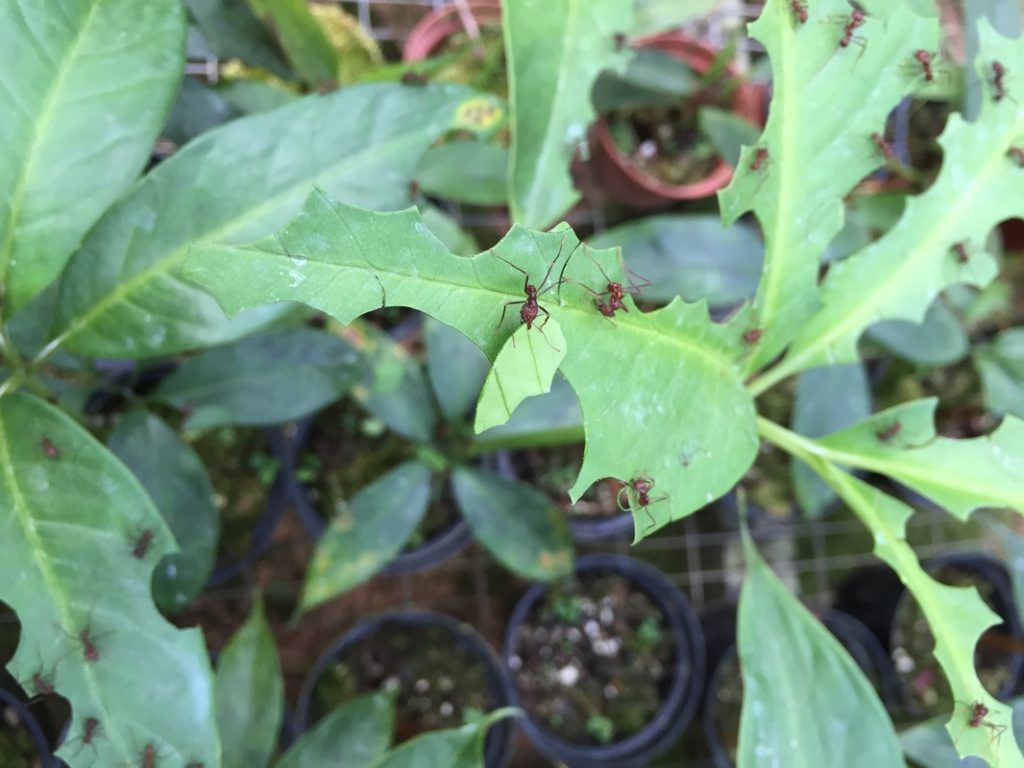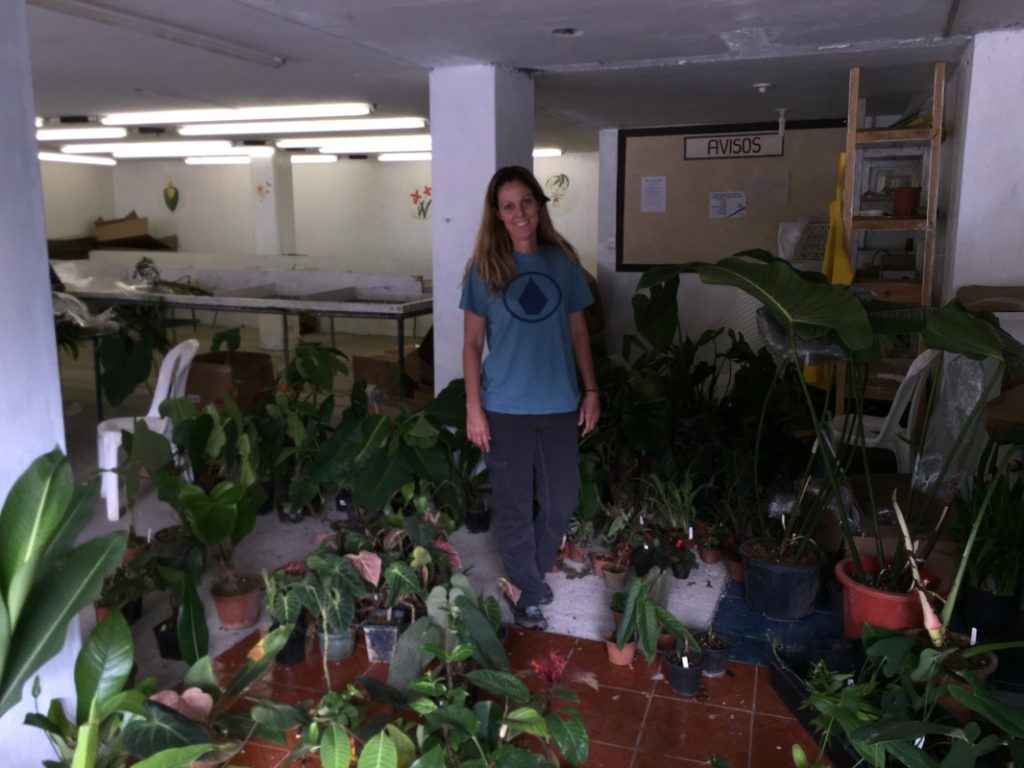Every year when I see my friend Ivan from Ecuagenera at the International Aroid Show he invites me to Ecuador. Something always comes up, or I just never make time. This time I finally got on the plane to Ecuador.
The drive through the mountains on the way to Gualaceo was fantastic!
Just the plants on the side of the road are enough to make your mouth water.
Plants look so different in their natural habitat rather than growing in a shadehouse. We stopped several times along the way to take pictures and to marvel at the diversity of the plant and animal life.
After arriving at the Gualaceo nursery where we were staying, we were shown such wonderful hospitality by Pepe Portilla who invited us all into his home to share meals and conversation.
To walk into one of Ecuagenera’s immaculate greenhouses is a life altering experience. Everything has its place, and the plants seem to go on for miles. Rows and rows of cool growing high elevation orchids grace the benches in Gualaceo.
It’s interesting that it becomes difficult to breathe after simply squatting down to take a picture, either from being used to living below sea level my entire life or the excitement of seeing so many new plants in one place. Don’t get me started on the stairs leading up to the greenhouses on the upper level…pant…wheeze!
Ecuagenera’s display garden in Gualaceo is mind blowing. To see so many plants that I struggle with, growing like weeds is quite humbling, but still I try…it’s a sickness. I need help.
If I thought I was in heaven before, this clinched it. We were met at the gate by Ray, who is the caretaker and all around plant guy at Pangui. It’s obvious he loves his job and takes great care with the plants. He seemed very excited to show us around, and show us what he’d been working on. The Pangui nursery is more my speed since it is their low elevation nursery. Still, at 2000 ft, some plants require cooler temperatures than I can offer.
I cannot begin to explain how beautifully grown the plants in the landscape are. To see these aroids happily growing up a tree is an experience I won’t soon forget. I almost had to sit down to recover from the shock of seeing patches of Anthurium regale 30 ft wide, Philodendron esmeraldense and Philodendron patriciae so large they were nearly taking down trees.
It was starting to get dark, so we had to run to go through the nursery. Imagine benches of anthuriums you’ve likely only seen pictures of growing in such quantities that it seems like a dream. Here’s some more pictures of plants you’ve only seen pictures of. All the while, Ivan’s patience for my obsessive picture taking was much appreciated. Sometimes he had to stop for a nap.
On the fourth day, we drove up and over the Andes mountains, towards Pangui, stopping for more pictures and some side excursions. A little dog was sitting near the top, the Loma de la Virgen, just hanging out. We wondered at his presence there, so far from civilization, but he seemed well fed and he seemed to have places to go.
That evening we went to eat at a restaurant (with WiFi!! Halleluja!) and a capybara trotted right past us and into the kitchen. He was eventually captured and carried out of the restaurant. In the excitement, I forgot to take a picture of the poor scared little guy.
It was tough to sleep that night knowing we were going back to Pangui in the morning, but I figured I could run on adrenaline…and coffee. Strangely, coffee is not popular in Ecuador and was sometimes difficult to find. Ivan worked tirelessly to keep me caffeinated and moving forward.
Arriving back at the Pangui nursery the next day, it was even more fantastic than I remembered. (fig 34-36) Now we had allll day to look around. One thing that I came to understand is that it is nearly impossible to put names to these aroids. Even as they are brought into the nursery, their habitat is being cut back to clear roads and to make pasture for cows. So many of these amazing plants are only seen growing in a small area. It seems it would only take one landslide (quite common in the area) to wipe out an entire species.
I went around for more pictures since the light was poor when we had arrived the previous evening. Pictures are the main reason I wanted to go to Ecuador. These plants vary so much as they grow and a plant in three different stages of growth can look like three completely different plants.
We were treated to some leaf cutter ants at work. These little guys neatly cut out pieces of leaves and use them to grow subterranian fungus gardens.
After a couple days of skipping merrily through Pangui, it was time to go back to Gualaceo so we could get permits and paperwork in order to bring the 527 plants back to the US…I told you I had a problem.
On the drive back across the mountains, the same little dog was trotting along in the opposite direction.
Once we returned to Gualaceo, we visited the rest of the greenhouses we had missed on our first visit, and Ivan took us to visit Gilberto Merino of Equaflor-A in Cuenca. Gilberto has a beautiful collection of plants. Many of them very well suited for terrariums. It’s obvious he has a knack for finding interesting plants, as his benches were covered with miniature plants I had never seen before. Gilberto will be bringing plants to sell at the IAS show this year.
We spent our remaining day eating, drinking coffee, (ahem!) and exploring, usually escorted by the Portilla’s beautiful llama dog, shown here sitting on my foot while I sit outside the office trying to use their wifi to check my email.
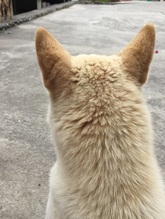
This was the trip of a lifetime, and the Portllias are such gracious hosts. If you ever get a chance, you owe it to yourself to check out Ecuagenera’s tours.

